Volume 13 Number 1
©The Author(s) 2011
“You Be the Bad Guy”: A New Role for Teachers in Supporting Children’s Dramatic Play
Abstract
This article describes teachers’ collaborative inquiry into the pretend “bad guy” play of 12 children in a university laboratory preschool classroom in the northeastern United States. The article describes the inquiry process and includes details and documentation of children’s decisions, actions, and interactions related to the bad guy play as well as the teachers’ reflections taken from field notes, meeting notes, and journals. Among the conclusions drawn by the teachers are that (1) children’s pretend play can become complex when teachers support but do not direct it, (2) teachers’ discomfort with certain play themes might inhibit play that could be valuable to children, (3) children’s pretending to act aggressively is not the same as acting aggressively, and (4) play has a rhythm and structure that can be better understood through documentation and reflection.
Introduction
After a long and unsuccessful attempt to banish “bad guy” play from a preschool classroom, we—the teachers and faculty in a laboratory school at a public university in a northeastern state—began to reflect on our own resistance to bad guy play and to systematically document this play in an attempt to learn more about its meaning to children and teachers.
For research purposes, we previously allowed pretend play with bad guys in our classrooms. We maintained a peripheral role to the play, mostly reminding children about safety considerations but otherwise remaining outside the play content. In so doing, we observed a higher level of sustained, cooperative, and engaging play among children (Logue & Shelton, 2008) than we had previously observed. We had read Gallas (1998), Paley (1991), and Katch (2001), whose research lent support to our decision to allow play that we had previously discouraged. We had also read the literature on superhero play and active rough-and-tumble play and had surveyed teachers about the kinds of play that they allowed or disallowed in their classrooms (Logue & Harvey, 2010).
While we had allowed and documented bad guy play the previous two years, we had been ambivalent about doing so. We thoroughly discussed our reservations during team meetings. Over time, we became convinced that children’s pretending to act aggressively is not the same as acting aggressively. Convinced that children could in fact develop social and cognitive skills through such play, we made a conscious decision not to stop play with aggressive themes.
In order to systematically make sense of the play we observed, teachers created a meeting schedule to regularly discuss and later reflect on our observations. In our initial meetings, we discussed play themes such as superhero play, war, and stealing. We noted that when we began to allow such play, the children seemed to be waiting for us to stop it from proceeding. We had decided, however, to operate from the belief that our role as teachers was best served by commenting on the play but allowing it to develop or stop by itself.
Our previous work documenting episodes of bad guy play involved only boys. Teachers acted as observers rather than participants. Although girls had never been discouraged from joining the play, they never had joined. We began to wonder if the themes we had observed during boys’ play—courage in the face of danger, protecting the greater good, rescuing vulnerable people from harm—were present in more subtle ways in the girls’ play or if the function served by play was different for the different players. We began to watch and more carefully document the play that occurred in the classroom doll corner. The events described in this reflective essay began with girls’ play in the doll corner, but the play developed new energy and complexity when boys and a teacher either voluntarily joined or were asked to participate.
The following report includes details about the bad guy play, as well as our reflections taken from field notes, meeting notes, and our individual journaling reflections. We created an inquiry group in which we reported communally what we learned about children’s play, ourselves as teachers, and our own changing attitudes. We read teacher accounts of bad guy play—notably Vivian Paley, Karen Gallas, and Jane Katch—and reviewed research literature on bad guy play and on executive function and play. The faculty supervisor, classroom teacher, and student teachers met weekly to discuss our readings, observations, and reflections.
Contextual Information
Setting
This inquiry took place in an inclusive preschool classroom of a public university laboratory school in the northeastern United States. The school typically serves 45 children ages 3-6. Class size averages 12 children in one of three half-day programs, each with a lead teacher and a student teacher. The program follows National Association for the Education of Young Children (NAEYC) guidelines for early childhood practice. The teacher preparation program is approved by the National Council for Accreditation of Teacher Education (NCATE).
The classroom space contains a loft with steps and a ramp separating that play space from the main classroom. Space under the loft is used for a library area. A bathroom is attached to the classroom. Children have access to the entire classroom.
After opening circle, during which the teachers inform the children about special learning opportunities available that day, children are allowed to play where they choose. In this case, we did not introduce a special learning opportunity related to bad guy play. We opened the day in a very typical way. We made no changes to the space that the children might be using, and we included no special toys or props.
Subjects
The 12 children who were involved in the interactions discussed here (6 girls and 6 boys ranging in age from 3 to 4-1/2 years) attended the morning session of the school-year program at the lab school.
The lead teacher was a graduate student in child development, and the student teacher was an undergraduate in the early childhood education program. Practicum students also observed and documented the children’s play, but they did not participate actively in the discussions or reflections reported in this essay.
Meetings
During this project, the faculty supervisor, lead teacher, and student teachers met at least weekly to discuss curriculum and individual children and to reflect on their teaching. The teachers kept journals about the children’s play and their own feelings and thoughts about the play. In addition to regular meetings, the teacher, student teacher, and faculty supervisor regularly maintained an email exchange that focused on their understanding of what they were observing.
The Day That “Saving Babies” Play Began
Basic Play Script
For more than a month prior to the play episodes we describe here, children’s play had involved dressing up and carrying dolls around the classroom, returning to the housekeeping area where dolls were gently put into cribs. Over a period of several days, we observed that a particular group of three 3- and 4-year-old girls removed the baby dolls from the doll corner, carrying them to the loft, then returning them to the doll corner. We decided that teachers should attend to and document the children’s use of language during this play. We made no assumptions about the nature of the unfolding play but recognized that the girls were moving their baby dolls from a safe and protected space into a new space. This behavior could, we suspected, signal the beginning of a heroic journey.
“There Is an Emergency”
One day, three 3- and 4-year-old girls donned dress-up clothes and carried baby dolls to the loft. One of the girls, Rosa (age 4), though not the oldest girl in the class, was recognized as a leader by both children and teachers. Rosa often had initiated the play script, and the other girls joined in. A highly verbal child, she conveyed enthusiasm with her voice. On this day, when the girls brought the dolls to the loft, Rosa announced, “There is an emergency,” then said more loudly, “There is an emergency!” while holding a doll over the edge of the loft.
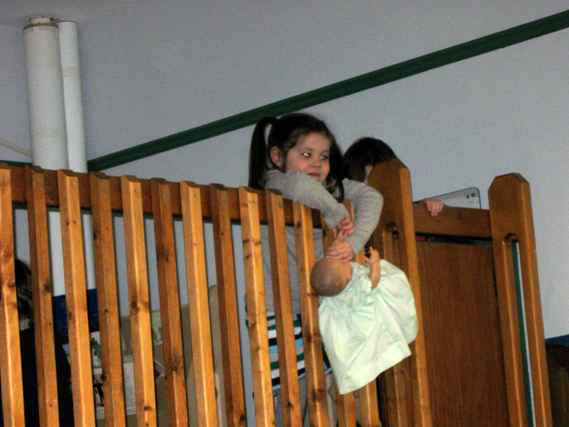
Figure 1. For the first time, doll play involved an emergency.
The children held onto their dolls, gently patting them, and traveled back and forth from the loft to the classroom many times, following Rosa who had a serious expression on her face.
On the second day, the “emergency” became more pronounced. Children dangled the dolls over the edge of the loft upside-down. They “rescued the babies” and comforted them. This play script was repeated many times, with different children taking the lead in announcing the emergency.
The children were definitely excited about saving the dolls from danger. Rosa started the play, but they all seemed to implicitly agree that each child should have a turn to announce the emergency and signal the rescue. They didn’t return to the housekeeping area until everyone had a turn. We noticed that they looked to us (the teachers) to make sure we saw them, but they were not asking for anything from us. We decided to watch the play and see if it developed further.
Changes to the Play Script
A Teacher Is Invited to Play
On the next day, a fourth girl (age 3) joined the play and took a turn calling the emergency. The play script was repeated but not extended. On the following day, Rosa announced that she needed a Band-Aid from the lead teacher, Ashlee, to help the doll. After the teacher supplied it (in an imaginary way), the children stated that they needed the teacher’s support for a broken leg.
Once the teacher’s participation became part of the script for this repeated play, other children joined the play, dangling dolls over the loft. Even Leo, one of the younger children in the group who usually played alone, joined the play and followed the familiar script he had been carefully watching.
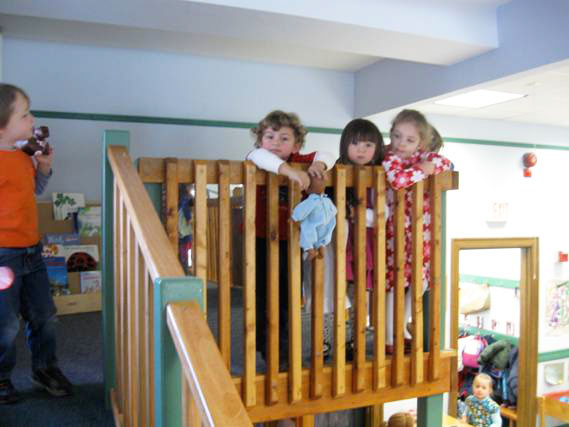 Figure 2. Leo joined the group after watching his classmates’ doll play.
Figure 2. Leo joined the group after watching his classmates’ doll play.
The teacher acknowledged the children’s invitation to participate in the play in the following dialogue:
Rosa: It’s an emergency. The babies are scared.
Teacher: What’s wrong?
Lucy: My baby is scared. My baby has a boo-boo.
Teacher: What are you going to do? How can you help the baby?
The children pulled in the dolls, comforted them, and then almost immediately put the dolls back over the edge.
Teachers’ Reflections
We were thrilled to see Leo join the play. He was such a keen observer, it was not surprising that he knew the script. He didn’t shout “emergency,” but he dangled the doll over the edge of the loft and followed the girls’ lead. We wondered if this emergency play served a similar function for the girls as the bad guy play we had observed among boys. The children in both scenarios behaved as “good guys” bravely acting to save and protect others. We were so excited to have Leo join the play that we didn’t immediately appreciate the shift in the teacher’s role. When Ashlee actively joined the play, other children did, too. How involved should teachers be in children’s pretend play? We were not sure. We did not want to shape the script but could see the potential for more inclusive play facilitated by a teacher’s presence.
We remembered that teachers in the Logue and Harvey (2010) study prohibited play that involved “hurting babies” and prohibited boys’ bad guy play. Now, however, we decided that even if the dolls were dropped over the edge (unless they endangered anyone standing below) we would not stop it. We were aware of how easy it would be to inhibit the girls’ play with statements such as “Be careful.” “We don’t hurt babies.” “The dolls need to stay in the housekeeping area.” How often do we discourage girls from more adventurous play without meaning to do so? We all could remember inhibiting statements made to us, as young girls, and hoped that we were not unintentionally doing the same thing to the girls in our classroom. We decided to pay careful attention to the language we express and the language we do not express (but think), and to discuss this topic later.
“You Can’t Play”
A significant change in the nature of the play occurred when a boy, Calvin (age 4), decided to join Gilda (age 3), Eleanor (age 4), Rosa (age 4), and Eva (age 4) in the loft. Calvin had watched the “emergencies” and knew the script. He grabbed a doll and charged up to the loft. The teacher, concerned about Calvin’s potential acceptance into the group of girls, followed him up and found to her surprise that she was the one excluded:
Calvin: You can’t come up. It’s only for boys and girls.
Teacher: Am I a boy or girl?
Girls: You’re a girl.
Calvin: It’s only for little boys and girls.
Teacher: Can I sit and watch?
Children: OK.
The girls who had originally negotiated the emergency play script now had to accommodate a new member—Calvin—one with potentially different ideas about the direction of the play. Calvin had watched the play intently but may not have known the subtleties the other children had agreed to. In fact, as the play unfolded, Calvin's presence elevated the level of urgency with his tone of voice and volume of speaking:
Calvin: Quick, everybody; the baby needs a Band-Aid!
Eleanor: Only girls can play.
Calvin stopped, looking confused. After all, he had negotiated entry into the play by defining it as for “little boys and girls.”
Teachers’ Reflections
In our debriefing session, Ashlee admitted to being confused, also. Calvin had seemed to be doing everything right in terms of the familiar script, but he was still excluded. We know it is not uncommon for same-sex playmates to exclude opposite-sex playmates in preschool. Lisa Serbin and colleagues (1977) found that when teachers intervened and supported cross-sex play, it increased the play but that teacher involvement was necessary for these groupings to continue. Ashlee had already been given permission to sit and watch play but not to play herself. Her commitment to helping Calvin gain entry into the play he so eagerly wanted to join was sufficiently strong to over-step the passive role she had chosen for herself. When she had crossed over into participation, she did so recognizing the power she commanded by being the teacher. Promoting prosocial, inclusive play is an easy role for her. Monitoring her language and behavior in terms of potentially altering the emerging girl play is less comfortable.
Ashlee negotiated with the girls about Calvin’s role:
Teacher: Why can only girls play?
Gilda: Because we’re the mommies.
Teacher: What about daddies? Do babies have daddies?
Children: I have a daddy.
Teacher: Can Calvin be a daddy?
Girls: OK.
Calvin entered the play, but there was no script for this new configuration of the play. Calvin’s presence, negotiated by a teacher (not the children themselves), shifted the play away from the familiar script to a new emergency. He watched the girls for cues about the play, but they didn’t give any.
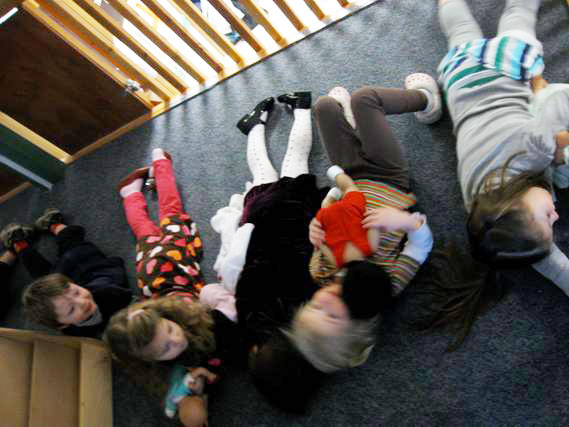 Figure 3. When Calvin joined the play, there was no familiar script for including him.
Figure 3. When Calvin joined the play, there was no familiar script for including him.
The group had not negotiated a familiar script for including an explicitly male role, though they had included Leo earlier.
Teachers’ Reflections
We worried that this cross-sex play might not continue without teacher involvement, but we were uncertain about how active to be in guiding the play. Should Ashlee disengage from the play and see what happened or stay connected and support Calvin’s inclusion?
For support, we returned to the literature. Sheldon and Engstrom (2005) suggest that boys and girls have the same linguistic competencies available to them but that they make different linguistic choices with different consequences for language and social development. In their study of same-sex triads, girl play was described as “day in ordinary life” with events including food preparation and baby care. Boy play, by contrast, was described as “dangerous and action-filled adventure.” These findings confirm those from other studies showing differences in play themes, activity levels, and social patterns for girls and boys (Holland, 2003; Pellegrini & Perlmutter, 1987). If adults can support girls and boys playing together in a pretend emergency, might we support the boys’ language while at the same time support the girls’ confidence and mastery?
The Shift from “Emergency” to “Bad Guy” Play
“You Have to be the Bad Guy”
Once again, Calvin announced an emergency. The urgency and volume of Calvin’s voice may have triggered expectations for the girls. Up to this point, the teacher had assumed the play would continue as it had with Calvin following the script defined by the girls, but it did not:
Girls (addressing Calvin): OK, you be the bad guy and steal our babies.
Calvin: NO! I’m not a bad guy. I’m a daddy!
Teachers’ Reflections
We had never heard girls initiate bad guy play, and we were interested to see what happened next. Calvin had not easily gained entry to this play and did not want to give up his role of protecting and rescuing babies. We wondered if the struggle we saw was a cognitive issue or a social one. Preschool-age children cannot easily coordinate two roles (Edwards & Ramsey, 1986). If daddies are good, they can’t be bad. Calvin was already a daddy and could not assume a second role. From the girls’ perspective, experience suggested that play involving boys and danger often included bad guys. They didn’t have a script for a daddy because the boys rarely join their domestic play scenarios, so they may have reverted to a frequently observed boy script in order to include him. From the girls’ perspective, the invitation to be a bad guy may have been a generous offer, but from Calvin’s, it was not. The way the children kept looking at the teacher suggested to us that they knew she wanted Calvin to be included.
The play reached an impasse until Rosa shifted the familiar script into unfamiliar territory:
Rosa (turning to the teacher): OK, YOU have to be the bad guy. Pretend you are the bad guy and you are stealing our babies.
All Children (excitedly): Yeah, be the bad guy.
Teachers’ Reflections
In our debriefing meeting after this episode, Ashlee described her discomfort at being asked to steal babies. We had encountered parent concern and questions from colleagues when we decided to allow bad guy play in the classroom initially. Many of our colleagues restrict bad guy play in any form. We knew the risks but were intrigued. We trust that the play has meaning to the children and that we can learn by watching it. We all recognized this incident as a critical moment in the play for the children but also for us. We acknowledged the weight of Ashlee’s decision. Because the classroom was in a laboratory school, her decision to enter into unfamiliar territory for herself as teacher was a public decision. Faculty and parents might be sitting on the other side of the one-way glass.
Ashlee reflected in her journal: It was a bit outside of my comfort zone, not so much being a bad guy, but stealing babies. This is a serious taboo! I was not sure how it would seem for me to be engaging the children in this type of play.
“Is It Pretend or Real?”
The conversation continued with negotiation between the teacher and the children:
Teacher: What do I do?
Child: You have to steal our babies.
Teacher: Is that good or bad?
Calvin: Bad. You are a bad guy.
Teacher: Is this pretend or real? I would NEVER really steal a baby.
Calvin: We know. It’s pretend.
All the children nodded in agreement; there was now a spoken consensus that what would take place next would be pretend. The children then handed the teacher the babies to steal.
Teacher: I’m going to steal the babies and hide in the bathroom.
The teacher then hid in the bathroom with the dolls as the children watched. The children went back to the loft, “discovered” that the babies were gone, and made a plan for rescuing them. As a group, they moved to the bathroom and confronted the teacher:
Teacher: What do you want?
Children: We want our babies.
The teacher gave the children back the babies.
This play continued almost exactly the same way for several days. Other children watched but did not participate. The level of engagement remained high among those children who were participating, and they seemed to take comfort in the security of the script. The repetition seemed to provide a structure for the excitement and emotion inherent in the play. After several days, the play shifted with Calvin’s new idea.
Calvin presented a new direction for the play in the instruction he gave to Ashlee:
Calvin (to the teacher): Pretend you’re a witch. Steal the babies.
The children handed the dolls to the teacher:
Teacher: I’m a witch. I stole the babies. I won’t give them back.
The teacher knelt on the rug with the baby dolls in her arms. The group gathered around her. 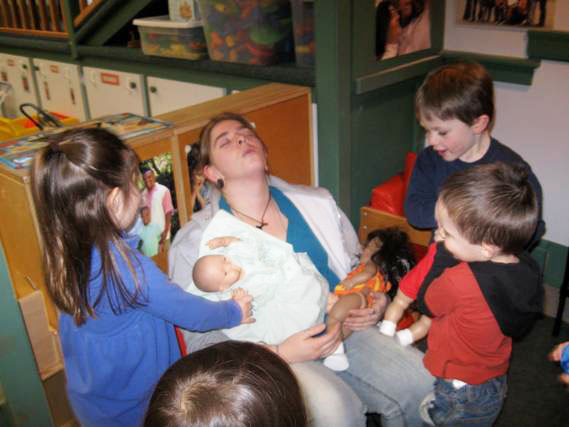 Figure 4. Children gather around the teacher, now in the role of “witch” assigned to her by Calvin.
Figure 4. Children gather around the teacher, now in the role of “witch” assigned to her by Calvin.
Calvin then changed the play script again with an announcement:
Calvin: I have powers, too.
Calvin used a pretend wand to “zap” the witch. Ashlee, having been zapped, then gave the baby dolls back to the children.
Rosa: Now pretend you’re a good witch.
Teacher: How does that happen?
Calvin: Zap. Now you’re a good witch.
This play episode was repeated several times with the same children. The group then expanded to include three children who were new to dramatic play. The six children then crowded into a small space. Calvin, previously the outsider, became a leader in the play group.
Eva then initiated a change in the script—the babies would be stolen while the children “slept”:
Eva (to the teacher): Pretend you are a bad guy, and you steal the babies while we are sleeping.
The children lay on the loft floor in a line and draped their arms over the baby dolls.
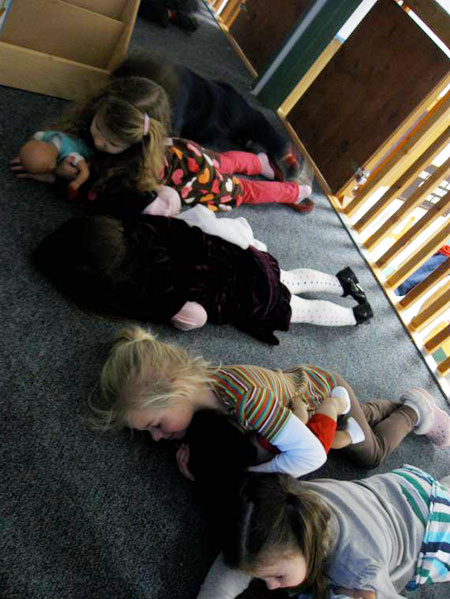 Figure 5. At Eva’s suggestion, the children “slept” next to the dolls.
Figure 5. At Eva’s suggestion, the children “slept” next to the dolls.
The teacher jiggled the dolls away from the sleepers and went down the loft stairs to the library below. The children waited, eyes (mostly) closed, until the teacher had collected every doll. The whole group then “woke up” and discovered the dolls missing.
They went down the loft stairs and demanded the dolls from “the bad guy.” This time the children did not ask the teacher to give the dolls back but instead took the dolls away. This new play script was repeated for three days with high levels of enthusiasm. The entire group was either watching or participating.
Teachers’ Reflections
In her journal, Ashlee reported:
The social interactions I’m noticing unfold are HUGE. The children engaging in this play have never really played with each other, nor have they shown much interest in any type of cooperative play. I am interested to see how far it will go, so I continue to be a baby stealer while still slightly uncomfortable in the role. I have to admit that I never saw this play developing the way it did. I simply wanted to support their interests, allowing them to take the lead in their play and learning. It’s amazing that one teacher decision NOT to restrict play led to weeks of amazing play involving every child.
Initially I was concerned with helping the children find a way for everyone to be able to play. The girls needed support to allow Calvin into the play, but once he joined, other boys were welcome. Most of the pretend play we see is girls playing together or boys playing together. Leo was allowed into the play as a follower, but something about Calvin’s energy required a change in the script. Maybe they were just running out of challenge and the play would have changed by itself, but I’m not sure. They needed some way to show their courage, to be the protectors. The girls protected their dolls when they rescued them from hanging over the loft, but when they could rescue them from a bad guy, they could REALLY be brave. They needed a bad guy. They wanted to be brave and nurturing and protective, but they needed a reason, something that would elicit this type of response. They truly NEEDED a bad guy. Once they had one, the group grew. More and more children joined in, and the group went from three and four to nine and ten. I was amazed at how welcome everyone was. They were all identifying things that they wanted to be able to do, and everyone seemed to agree on what was needed…bravery! How many opportunities to learn about children do teachers miss when they restrict bad guy play?
After three days of repeating this scenario, the children began to place the dolls beside them to sleep, not touching them as they had done previously. They also directed the next step, another change in the play script. Eva, Marcos, Calvin, and Rosa discussed the plan before presenting the change to the teacher:
Children (directing the teacher): Pretend you’re sleeping, and we come steal them back.
Ashlee agreed to the change. The children came quietly and “stole the babies back” from her. They waited for everyone involved to make the journey from loft to library before they stole back the babies. This play script was repeated throughout the day. The teacher was not allowed to wake up until the children and the baby dolls were all safely back in the loft:
Rosa: OK, you can wake up now.
Figure 6. Rosa directed the “bad guy” to wake up.
Marcos, a 4-year-old child who had engaged in the “stolen babies” play for five days, then took the lead in extending the play. He met the teacher on the loft stairs and “arrested” her. They took her to “jail,” which was down the ramp and under the loft:
Teacher: Why am I being arrested?
Children: You stole babies.
After putting her in jail, the children collected the dolls while she pretended to be sleeping.
Teacher (awaiting cues from the children): Now what?
Children: Pretend you are in jail, and you have our babies.
The children gave the dolls to the teacher; she did not have to steal them this time. They then took the dolls back from her, while she stayed asleep until the children had all returned to the loft safely with their babies. This play script was repeated three times. The teacher then commented:
Teacher: I didn’t know I’d go to jail.
Marcos and Calvin: Too bad! You’re a bad guy.
From her jail cell, Ashlee listened to and observed the changing social dynamic in the group.
Teachers’ Reflections
As the play grew and changed, so did the social interactions within the classroom. It was surprising how the children all came together against the bad guy. Ashlee reported, “From my jail cell, I watched the children cooperating with each other, engaging in problem solving, directing the script and tone of the play; and through it all, there were never any arguments or disagreements. The children were navigating conflicting ideas about scripts and what to do next while combining ideas from multiple children, and all of this was happening without a teacher’s assistance. I was so impressed with how well they were communicating with each other, talking and sharing ideas, and making sure to include everyone. Older children helped support younger ones, and they found a way for everyone to have a part. Even the children who were less verbal and did not communicate as much as some of the others were sharing ideas about what to do next. New members transitioned into the play easily, simply by getting a doll and going up to the loft. Although it was starting to get cramped up there, they always managed to make room for one more friend.”
Aside from the blossoming social interactions, we recognized a shift in our own attitudes about our roles as teachers. We were totally engaged in this play. We were intrigued by the rhythm of the script, the way innovation emerged out of repetition. We recognized the value in being an active participant in children’s pretend play but also in not directing it. We also had a measure of delight in sanctioning and participating in play so many of our colleagues dismiss as simply disruptive and “inappropriate.”
Ashlee reflected, "I think that the neatest part for me was seeing their growing trust in the play itself. They clung to the dolls at first but as their trust increased, they allowed more distance between the sleeping dolls and themselves. They seemed to understand that the script, as they were developing it, demanded they allow the dolls to be stolen so they could rescue them. They changed from magic and zapping a bad witch to using social constructs such as a jail, and as these changes happened, they allowed more distance between their dolls and themselves. Now they had the power to get the dolls back by themselves."
The Teacher Moves Aside
At this point, Ashlee wondered if the play was stuck, and for the first time since it began, she initiated a change while in role of the bad guy. The next time the play was repeated, she moved to disengage from that role:
Teacher: I don’t know if I want to be the bad guy.
Marcos (immediately): I will.
The children gave Ashlee a doll and invited her to switch her roles with Marcos and join the play by staying asleep. Because Marcos was not as big as the teacher and could not carry as many dolls, he had to make two trips to steal all of the dolls.
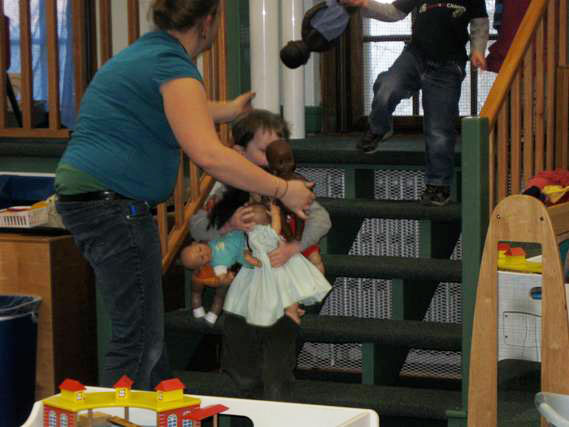 Figure 7. Getting all of the dolls required two trips for Marcos.
Figure 7. Getting all of the dolls required two trips for Marcos.
Rather than holding them and pretending to sleep, Marcos hid the dolls in the book area and pretended to sleep. The children crept down and couldn't find the dolls until Calvin saw a doll’s foot that was not completely covered. They dislodged all of the dolls from under the couch and from under the pillow in the book area. Marcos did not stay asleep. He protected his stolen dolls with a grimace but allowed them to be rescued.
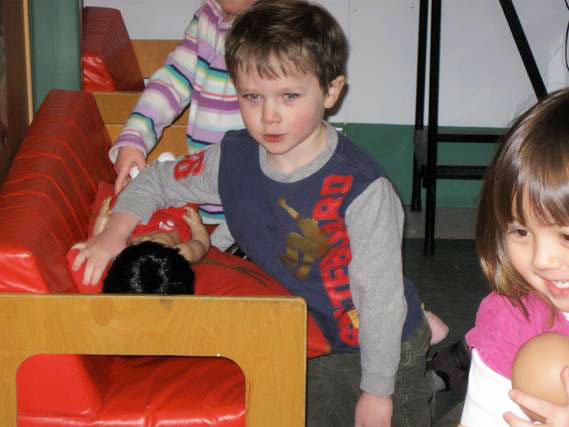 Figure 8. Marcos grimaces in his role as bad guy.
Figure 8. Marcos grimaces in his role as bad guy.
The rescuers did not leave the book area until every doll was found.
Supporting a Novice Player
This play script was repeated over several days. The entire class participated in the play, waiting patiently until every doll was stolen and hidden by the bad guy, and waiting again until every participant was present before searching for the dolls.
After several days of being the bad guy, Marcos turned to the teacher on his way back up to the loft and said, “I don’t want to play anymore.” The teacher said “okay,” and Marcos went off to play somewhere else.
Ashlee then turned to the other children who were still playing and said, “Marcos doesn’t want to play anymore." She noticed Leo bouncing up and down on his toes and looking expectantly at her. Leo was the youngest child in the classroom, and this was the first time he had engaged continuously in dramatic play with his peers. Realizing that Leo’s involvement in dramatic play in any capacity was a big developmental step for him and understanding that he might aspire to the leadership role in the play, the teacher asked him, “Leo, would you like to be the bad guy now?” He nodded vigorously, and the children all agreed that Leo would become the new bad guy. The play resumed.
Leo was smaller than most of the other children, so it took him five trips up and down the loft to steal all of the dolls. The children continued to wait until he had taken all of the dolls before they would wake up to go rescue the babies. This time, Leo hid the dolls in a different place, and the children all had to work together to find them. Leo, still in his role as the bad guy, became very excited when the others searched for the dolls and began returning the dolls to their rightful owners, taking them from their hiding places and handing them to his classmates.
Leo’s adventure stealing dolls and helping to return them signaled the end of the “stealing babies” bad guy play. The weather changed, and the class began to spend more time outside, gardening and involved in physically active play.
Teachers’ Closing Reflections
The “stealing babies/saving babies” play described here is but one scenario in one classroom. We wondered if the high levels of cooperation, consideration, impulse control, memory, and planning we saw through play would be sustained after the play concluded. This question begs for further inquiry. We did notice that in the few remaining weeks of the school year, we observed children going in and out of play groupings easily.
One lasting impact of this bad guy play was felt among the teachers. We came to appreciate how complex children’s pretend play can become when teachers support but do not direct it, and how our own discomfort about play themes might inhibit play that might be highly valuable to children. We have become more reflective about our language and our rules about play. If children are able to understand that one type of play is not aggression, we need to understand that also and to allow play to develop without making assumptions about it. We also came to appreciate that pretend play has a rhythm and structure that we can better understand through careful documentation and reflection; we should not rush it or impose rules that make the play conform to our expectations. We also noted how much we all learned about child development and teacher development when we entered into an inquiry about which we did not know the outcome. Collaborative inquiry is grown-up play.
We were impressed by the levels of sustained attention, planful negotiation, cooperation, and inclusive play among the children we observed during the scenarios reported here. We planned to explore the connection between these executive skills and pretend play in future research. We felt committed to having daily conversations about play, individual children, and our assumptions about our roles as teachers.
Conclusion
The “saving babies” play documented in this article was possible only because of the skilled intervention of a teacher who was able to balance her own discomfort in assuming an unfamiliar and potentially controversial role with her commitment to child-directed learning. Clearly, there are implications for teacher education. Too often, dramatic play themes are chosen by adults to allow children to practice safe, familiar roles (e.g., community helpers, housekeeping), while the emotionally engaging themes involving the struggle between good and evil, and courage in the face of danger, are actively discouraged, especially when the play script involves bad guys. Ashlee, the teacher in this inquiry, experienced ambivalence and discomfort in her new role as a bad guy, but because she was able to tolerate the tension of that discomfort long enough to learn about children’s play intentions, the children were subsequently able to envision new roles for themselves in increasingly complex play.
Our observations support Elena Bodrova’s important work linking mature dramatic play to skills that underlie future school success (Bodrova, 2008). The “tools of mind” Bodrova discusses—including cooperation, planning, impulse control, and memory—were observable in the bad guy play documented here. This potential link leads us to suggest that early childhood teacher education programs might benefit from paying more attention to helping teachers think about pretend play and their roles in supporting it.
While some of the children in this class had language delays and moderate impulse-control issues, none presented serious behavioral challenges. Previous work about bad guy play (e.g., Pellegrini, 1998) indicates that a small percentage of children in classrooms may escalate from pretend aggression into real aggression, but that most will not. We are not suggesting that the stealing/saving baby play be intentionally replicated in other classrooms, as that would involve teacher direction rather than child-initiated play. We hope instead that readers will reflect on their own potential roles when presented with children’s bad guy play or other play themes that they may initially find uncomfortable, perhaps discovering ways to deepen that play to support children’s interests while unobtrusively making accessible to increasing numbers of children the cognitive and social learning inherent in the play.
Acknowledgments
Mary Ellin and Ashlee would like to thank Erika Hunter for her thoughtful feedback on earlier drafts of this work.
References
Bodrova, Elena. (2008). Make-believe play versus academic skills: A Vygotskian approach to today's dilemma of early childhood education. European Early Childhood Education Research Journal, 16(3), 357-369.
Edwards, Carolyn Pope, & Ramsey, Patricia G. (1986). Promoting social and moral development in young children: Creative approaches for the classroom. New York: Teachers College Press.
Gallas, Karen. (1998). “Sometimes I can be anything”: Power, gender, and identity in a primary classroom. New York: Teachers College Press.
Holland, Penny. (2003). We don’t play with guns here: War, weapon and superhero play in the early years. Maidenhead, Berkshire, England: Open University Press.
Katch, Jane. (2001). Under deadman’s skin: Discovering the meaning of children’s violent play. Boston: Beacon Press.
Logue, Mary Ellin, & Harvey, Hattie. (2010). Preschool teachers’ views of active play. Journal of Research in Childhood Education, 24(1), 32-49.
Logue, Mary E., & Shelton, Hattie. (2008). The stories bad guys tell: Promoting literacy and social awareness in preschool. The Constructivist, 19(1). Retrieved December 16, 2010, from http://www.odu.edu/educ/act/journal/vol19no1/FinalLogue.doc
Paley, Vivian Gussin. (1991). Bad guys don’t have birthdays: Fantasy play at four. Chicago: University of Chicago Press.
Pellegrini, A. D., & Perlmutter, Jane C. (1987). A re-examination of the Smilansky-Parten Matrix of play behavior. Journal of Research in Childhood Education, 2(2), 89-96.
Pellegrini, A. D., & Smith, Peter K. (1998). Physical active play: The nature and function of a neglected aspect of play. Child Development, 69(3), 577-598.
Serbin, Lisa A.; Tonick, Illene, J.; & Sternglanz, Sarah H. (1977). Shaping cooperative cross-sex play. Child Development, 48(3), 924-929.
Sheldon, Amy, & Engstrom, Heidi. (2005). Two systems of mutual engagement: The co-construction of gendered narrative styles by American preschoolers. In Joanna Thornborrow & Jennifer Coates (Eds.), The sociolinguistics of narrative (pp. 171-192). Philadelphia: J. Benjamins Publishing.
Author Information
Mary Ellin Logue, Ed.D., is an associate professor of early childhood education at the University of Maine. She actively studies teaching interventions that support school success for children who do not easily fit in traditional settings. She is particularly interested in what adults can learn from children by listening deeply. Her interest in bad guy play grew out of her listening to children and teachers. Her background is in child development, special education, teacher education, and parent involvement.
Mary Ellin Logue
112 Merrill Hall
University of Maine
Orono, ME 04469
Email: mary.logue@maine.edu
Ashlee Detour, M.S., is an early childhood educator at the Google Children's Center. At the time the work described in this article occurred, she was head teacher at the Katherine Miles Durst Child Development Center at the University of Maine. Ashlee is committed to making learning meaningful and personal to children and to inclusion of all children in play. She is especially interested helping children connect deeply to the natural world.

